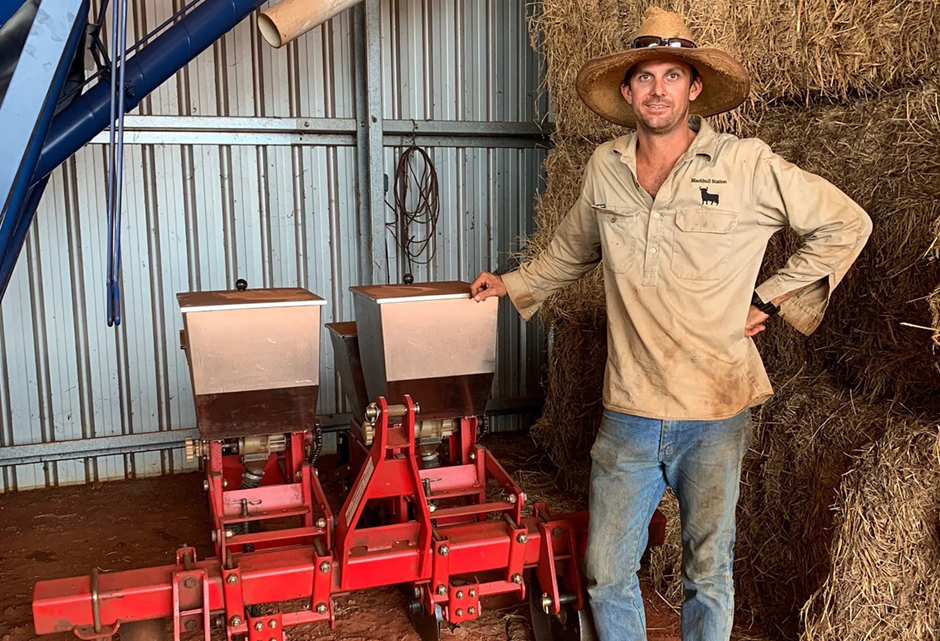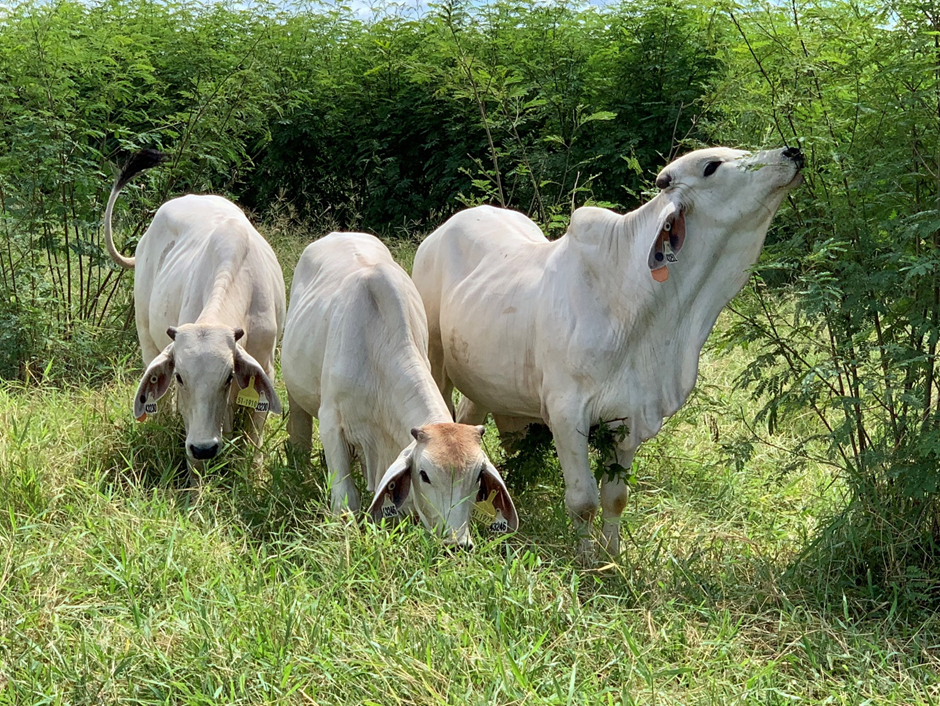Weeds, wallabies and water: taking on the northern leucaena challenge

Logan Reid, Blackbull Station, Douglas-Daly, NT.
Producers in drier regions might think an average wet season rainfall of 1,300mm would be more than enough to successfully establish and manage the tropical legume forage crop, leucaena…
…but for Douglas-Daly producer Logan Reid, his environment has provided a unique set of challenges.
Logan has dedicated 47ha of the property he manages, ‘Blackbull Station’, to a producer demonstration site (PDS) run by The Leucaena Network and MLA, which looks at sustainable long-term leucaena production in northern Australia.
The leucaena variety Cunningham was already established on the station, so Logan was keen to be involved to test the suitability of other varieties, Wondergraze and Redlands, to meet his production goals.
Throughout the trials, he’s picked up on some key learnings which he’ll apply for future leucaena planting.
“Leucaena has amazing potential, but the management early on is crucial to reap the rewards,” Logan said.
“Once it’s up and going, it’s pretty hard to knock, but you have to prepare accordingly, or it’s just going to be a wasted investment.”
Here are three of Logan’s tips for successful leucaena in the Top End.
1. Prepare early and prepare well
The first step was to establish whether Blackbull’s soils could support leucaena, so soil testing was used to determine phosphorous, sulphur and calcium levels – which were adequate.
The next step was to deal with weed pressure, which Logan said was immense due to their high rainfall.
“We started knock-down spraying in the season prior to planting, using herbicides after the first rain right up until sowing to get a weed-free seedbed,” he said.
“Try to get as many sprayings in as you can to give the leucaena the best chance.”
When planting, they sowed each variety in twin rows with 60cm centres, depth of 25mm and with 5cm intervals, only changing the row spacings from 6m–12m–18m. They also applied 220g/m of fertiliser (Legume Xtra Agfert) at planting followed by the weed control Spinnaker® and pesticides over the rows the day following planting.
Logan said although the preparation and management were vigorous, it was worth it, with Blackbull recording emergence rates of 80% for their leucaena and resilience of 70%.
2. Be aware of water flow
Another challenge presented by the high rainfall was water flow damaging leucaena establishment.
“We had a really good germination of a section of leucaena, then ended up getting a huge fall of rain,” Logan said.
“This caused a sheet of water to go straight across that area and it wiped out 90% of those seedlings.
“We’re going to build up contour banks to prevent this in the future, but it’s something to consider when planning where you grow, because young plants are very fragile and don’t hold up well to water flow.”
3. Keep pests away
Logan also credits good establishment in their leucaena crop to fencing the site off from pest pressure at the beginning of the trial.
“Leucaena is quite expensive to establish, so we weren’t taking any chances with it, ringlocking the paddock to stop any little critters from getting to the plants,” he said.
“Another site in the PDS didn’t initially fence off their leucaena, and it copped a hammering from wallabies over the dry season.
“While it’s an additional cost, it’s a very worthwhile investment to make sure the leucaena remains exclusively for cattle.”

Trial observations
Due to lower-than-average rainfall over the first two seasons of the PDS, the leucaena on Blackbull only began to record serious growth over the 2021–22 wet season, meaning Logan’s weight gain data to date is limited.
“On our block, the Cunningham and Wondergraze do seem to be faster growing than the Redlands, and with no psyllid pressure where we are, it would make sense to plant these varieties in the future,” he said.
“With the spacings, we’ve not noticed a great deal of difference between the varieties.
“Because of our high rainfall, I’m leaning towards tighter spacings being the way to go as they increase the leucaena to grass ratio, but for producers with less rainfall, they might need more grass so would be better suited to wider spacings.”
LESSONS LEARNT
- Early preparation of soils and land is critical for successful leucaena establishment.
- Do not plant in areas with high water flow, as this can wash seedlings away.
- Fence leucaena crops off to reduce the impact of pests.
Resources
- Find leucaena and legume resources at mla.com.au/leucaena and mla.com.au/legumes
- The Leucaena Network has information about growing and managing leucaena: leucaena.net



